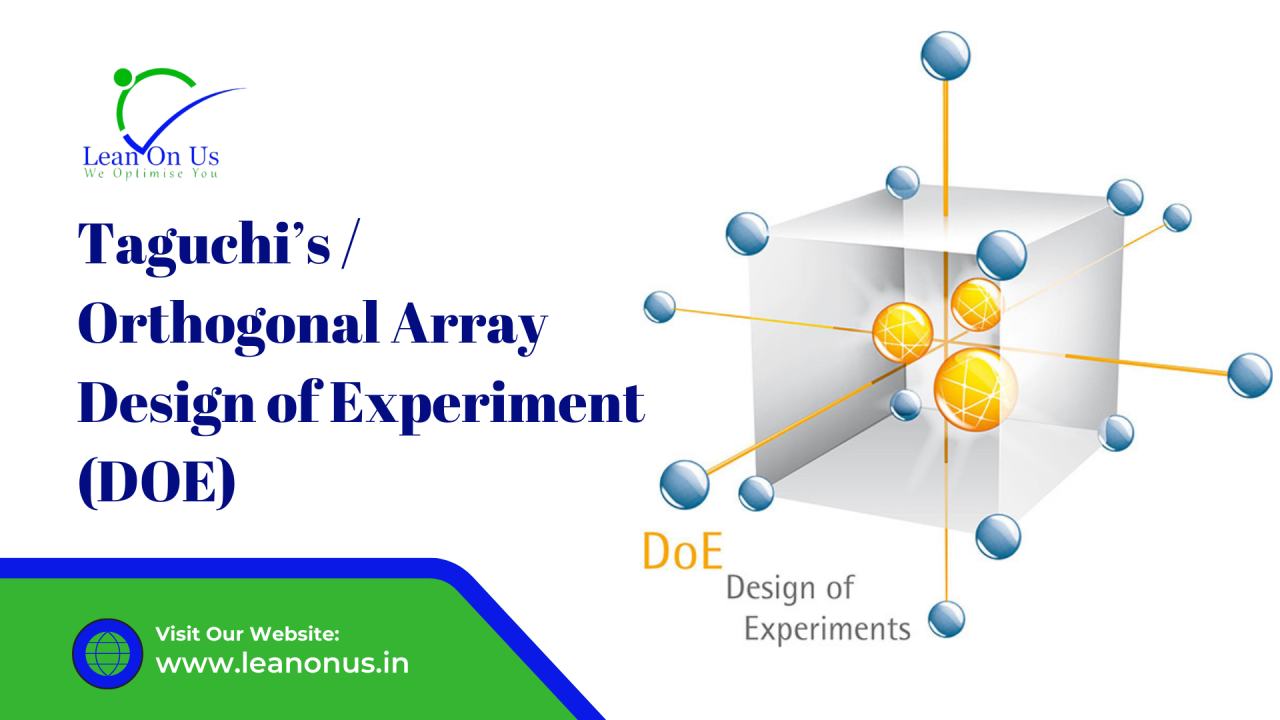
Evolution of Taguchi's / Orthogonal Array Design of experiments, benefits and steps for reaping effective benefits out of an experimentation
In the quest of quality engineering and process optimization, the Taguchi Method stands as a beacon of efficiency and effectiveness. Central to its success is the concept of orthogonal arrays, which originated from the pioneering work of Dr. C.R. Rao, a distinguished Indian statistician. This article aims to explore how Dr. Rao's orthogonal array concept laid the groundwork for Dr. Genichi Taguchi's innovative approach to experimentation, revolutionizing the field of quality improvement. We will also explore the steps involved in Taguchi's Design of Experiments (DOE).
History of Taguchi’s Design of Experiments/ Orthogonal Array Design of Experiments.
Dr. C.R. Rao, often regarded as one of the greatest statisticians of the 20th century, introduced the concept of Orthogonal Arrays in the 1940s. Orthogonal arrays are a systematic way of representing a set of experimental conditions that ensure efficient exploration of factor interactions while minimizing the number of experimental runs required for exploring the effects of multiple factors on outcomes.
Dr. Taguchi's journey into orthogonal arrays began with his study of Dr. Rao's work and its application in various industries. Recognizing the elegance and efficiency of orthogonal arrays, Dr. Taguchi sought to incorporate these principles into his own methodology for quality improvement. Through rigorous experimentation and refinement, he developed a comprehensive approach to DOE that integrated Dr. Rao's foundational concepts with his innovative insights.
Orthogonal arrays allowed Dr. Taguchi to create a structured framework to identify optimal settings that maximized performance or quality while minimizing variation.
When to Use Taguchi Design of Experiment:
To improve the following,
Product and Process Optimization.
Cost Reduction
Quality Improvement
Performance Enhancement
It robustly optimize a process by making it less sensitive to variations or noise factors.
Pro’s of Taguchi Design:
Taguchi factorial design has advantages in the manufacturing industries like
Improving Efficiency
Incorporating Robustness
Cost Reduction
Improved Quality
Focusing on robustness, can handle noise factors, and provides a systematic approach to optimization.
Con’s of Taguchi Design:
While it has many advantages, it also has some limitations:
Relies on Assumptions
Limited to Factors Studied
Complex Analysis
Applications:
Taguchi Design of Experiments (DOE) can be predominantly applied in various sectors within the manufacturing industry. Here are the top 10 sectors where Taguchi DOE finds significant application:
Automotive Manufacturing
Electronics Manufacturing
Aerospace and Defense
Pharmaceutical Manufacturing
Food and Beverage Processing
Chemical Manufacturing
Textile and Apparel Production
Machinery and Equipment Manufacturing
Medical Device Manufacturing
Renewable Energy Manufacturing
It can be applied across various stages of product development and manufacturing, including design optimization, process parameter optimization, quality improvement, and reliability testing. Its systematic approach allows manufacturers to identify optimal settings and configurations that maximize performance while minimizing variation and cost.
Major Steps for Taguchi DOE Experimentation:
Define the Problem and Objectives: Clearly articulate the problem statement and the specific objectives you aim to achieve through experimentation. Whether it's improving product quality, optimizing process parameters, or enhancing performance, having a well-defined goal is essential for a successful Taguchi experiment.
Identify Key Factors and Levels: Identify the critical factors that influence the outcome of interest and the range of values (levels) each factor can take. Focus on factors that are controllable and have a significant impact on the outcome while keeping the number of factors manageable.
Design the Orthogonal Array: Select an appropriate orthogonal array based on the number of factors and levels to be tested. Orthogonal arrays ensure efficient exploration of factor interactions while minimizing the number of experimental runs required. Taguchi's standard orthogonal arrays, such as L4, L8, L16, and L32, are commonly used designs.
Conduct Experiments and Collect Data: Execute the experimental plan outlined by the orthogonal array, conducting the necessary number of runs to cover all factor combinations. Collect data on the outcomes of interest for each experimental run, ensuring accuracy and consistency in measurement.
Analyze Results and Determine Optimal Settings: Analyze the collected data using statistical techniques such as analysis of variance (ANOVA) and signal-to-noise (S/N) ratios. Identify significant factors and their optimal levels to achieve the desired outcome. Taguchi's robust parameter design focuses on minimizing variation and maximizing performance through the determination of optimal factor settings.
Conclusion:
The successful integration of Dr. C.R. Rao's orthogonal array concept into Taguchi Design of Experiments underscores the transformative potential of statistical methodologies in driving operational excellence within the manufacturing industry. As a trainer and consultant, I've witnessed firsthand the profound impact of Taguchi DOE in many organizations, empowering them to navigate complex challenges and achieve sustainable growth. As industries continue to evolve, embracing methodologies like Taguchi DOE will undoubtedly remain pivotal in charting a course towards excellence and enduring success.
We, Lean On Us have trained and handheld many organizations to improve their process. You can get in touch with us for any assistance.
Nithin M R
+91-9945704777